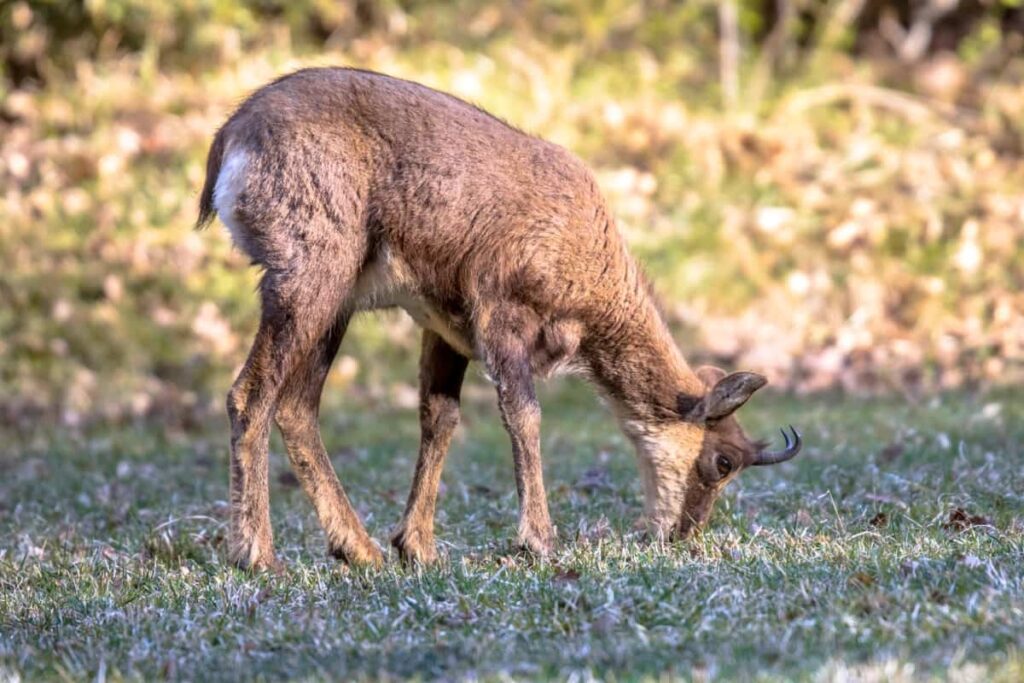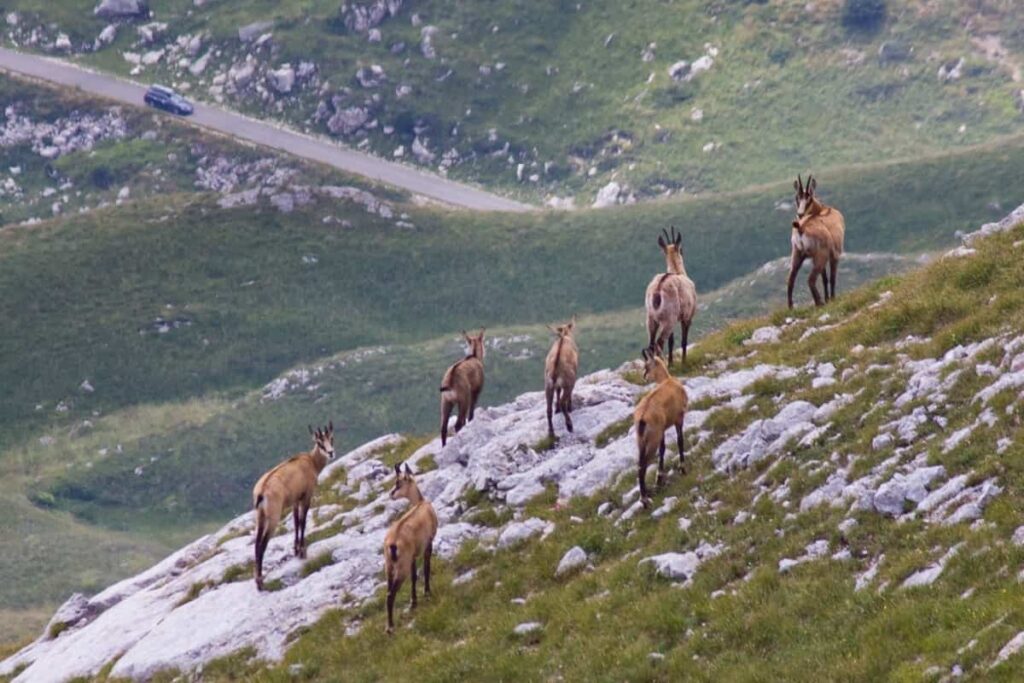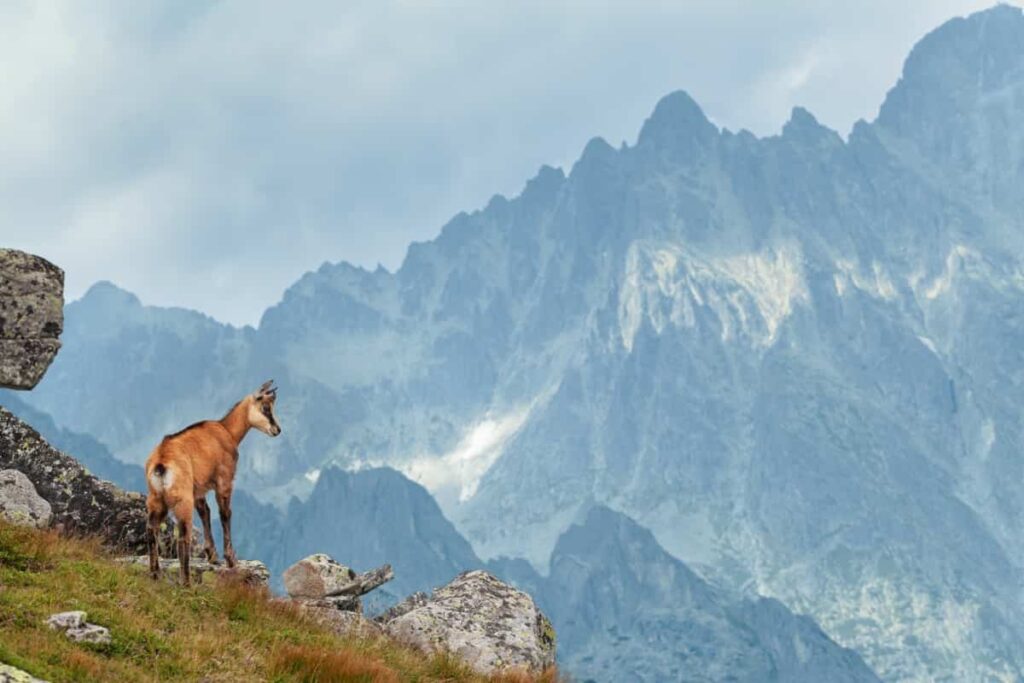The Chamois Colored goat is a domesticated breed native to Europe and Asia Minor, belonging to the genus Rupicapra. Switzerland developed this breed of mountain goats, which has become popular for meat and milk production. Chamois Colored goats make excellent additions to any farm or homestead due to their versatility in milk and meat production and striking appearance.

Chamois Goat Characteristics
Where Do Chamois Colored Goats Come From?
The origin of Chamois Colored Goats can be traced back to Switzerland, where this breed was developed. The Swiss people wanted to create a new breed of domesticated mountain goats that could thrive in the harsh alpine environment and provide them with both milk and meat. Chamois Colored Goats are now found all over Europe and Asia Minor due to their hardiness and adaptability. They have become popular among farmers for milk and meat production due to their excellent quality products.
Personality and Physical Characteristics of Chamois Colored Goats
- The goats have a unique coloring that sets them apart from other breeds. They are brown with black stripes on their face, back, belly, and legs. Some individuals may be horned, while others are polled (without horns).
- Chamois Colored Goats have a friendly and docile personalities. They are easy to handle and make great companions for farmers. These goats are intelligent animals that can learn quickly, making them responsive to their owner’s commands.
- Despite being gentle creatures, Chamois Colored Goats also possess an independent streak. They like to explore their surroundings and enjoy having the freedom to roam around. This trait makes them ideal for grazing on mountainous terrain, as they are natural climbers with excellent balance.
- Chamois Colored Goats are social animals that thrive in the company of other goats. They enjoy playing and interacting with other herd members, which helps keep them mentally stimulated and happy.
- The personality of Chamois Colored Goats is well-suited for life on a small farm or homestead where they can graze freely and interact with other members of their species.
- Chamois Colored Goats are highly adaptable animals that thrive in various climates and terrains.
- The personality of Chamois Colored Goats is gentle yet strong-willed. With proper care, they make wonderful companions for farmers or families looking for a loyal pet that provides both milk and meat production benefits.
Chamois Colored Goats Appearance
- The appearance of Chamois Colored Goats is quite distinctive, with their brown coats and black face stripes, back stripe, belly, and legs. They are medium-sized goats that possess a sturdy build and well-muscled body.
- Both male and female Chamois Colored Goats have specific weight requirements to meet certain standards in breed characteristics. A buck must weigh at least 75 kg, while the does must have a minimum body weight of 55kg.
- These size requirements help ensure that these goats can produce sufficient milk or meat for their owners. Additionally, it gives potential buyers an idea of what they should expect when purchasing this breed.
- These goats’ physical appearance is unique; their striking coat pattern and muscular physique make them attractive livestock animals on farms worldwide.
In case you missed it: Goat Breeding and Genetics for Improved Productivity and Disease Resistance

How Long Do Chamois Colored Goats Live?
- Chamois Colored goats have a relatively long lifespan compared to other domesticated goat breeds. Female Chamois Colored goats can live up to 20 years, while males typically live for about 15 years.
- Several factors, such as diet, healthcare practices, and living conditions, can influence the lifespan of Chamois Colored goats. Proper nutrition is important for the longevity of these animals; they require a balanced diet consisting mainly of young shoots of alpine bushes and trees, grasses, leaves, mosses, and lichens in winter.
- Regular health check-ups are also necessary to keep these animals disease-free. Vaccinations should be given on time against common diseases like pneumonia or tetanus.
- Providing them with appropriate shelter from extreme weather conditions plays an important role in their overall well-being, ultimately affecting their life expectancy.
Chamois Colored Goats Diet
- Chamois Colored goats are herbivores whose diet mainly consists of vegetation in the alpine regions. During spring and summer, they graze on young shoots of bushes and trees. The lush green grasses provide them with essential nutrients required for growth.
- As autumn approaches, leaves fall from the trees providing abundant food for the Chamois-Colored goat. They also eat shrubs such as juniper berries that grow in this region.
- During winter, when snow covers much of their natural grazing areas, these goats switch to lichens and mosses, which can grow on rocks or tree trunks. These hardy plants provide a good source of nutrition during harsh winter conditions.
- They need a carefully balanced diet, including hay supplements, especially during colder months when access to fresh vegetation may be limited.
Chamois Colored Goats Meat and Milk Production
Chamois Colored Goats are known for their high-quality meat and milk production. The does can yield an average of 700 kg of milk per lactation period, which is nutritious with a fat content of 3.4% and protein content of 2.9%. This makes them great for dairy products like cheese, yogurt, and butter. Regarding meat production, these goats have a live market weight ranging from 55-75 kilos. The meat quality is considered tender due to their low-fat diet in the alpine regions, where they graze on young shoots of bushes, trees, grasses, and leaves.
Take Care of a Chamois Colored Goats
- These goats require good nutrition, plenty of fresh water, and shelter to keep them healthy and happy.
- To ensure proper nutrition for your Chamois Colored Goats, you should provide them with access to pasture or hay. They also need additional feed that contains essential minerals and vitamins. You can easily find commercial feeds specifically designed for dairy goats in local stores.
- It’s important to ensure that the enclosure where they are kept is always clean and dry.
- Chamois Colored Goats love exploring their surroundings; however, these animals are prone to predator. Hence, securing their pen with fencing is necessary to protect them against any possible problem.
- To properly raise Chamois Colored Goats, one must provide ample space, nutritious food, and shelter from harsh weather conditions. Additionally, regular health checks by a veterinarian should also be conducted to ensure the well-being of the goats.
- Regular medical check-ups by a veterinarian will help identify signs of disease early on, ensuring prompt treatment.
In case you missed it: Innovative Housing and Shelter Designs for Profitable Goat Farming

Conclusion
The Chamois Colored Goat is an excellent choice for a dual-purpose animal with meat and dairy production. Due to their dual-purpose nature, these animals provide farmers an efficient way to produce high-quality dairy products.
- Goat Milking Practices and Equipment: A Beginner’s Guide
- Goat Farming for Fiber: Producing Mohair and Cashmere
- Maximizing Goat Milk Production: Tips for Dairy Goat Farmers
- Goat Farming as a Family Business: Strategies for Success
- Profitable Kenya Goat Breeds for Commercial Dairy and Meat Business
- Unlock the Secrets of Oberhasli Goat: Discover Raising and Management Practices
- Ultimate Guide to Myotonic Goats: Explore Profile to Raising
- Unlock the Secrets of Rove Goat: Discover Management Practices
- Ultimate Guide to Malwa Goat: Explore from Origin to Management Practices